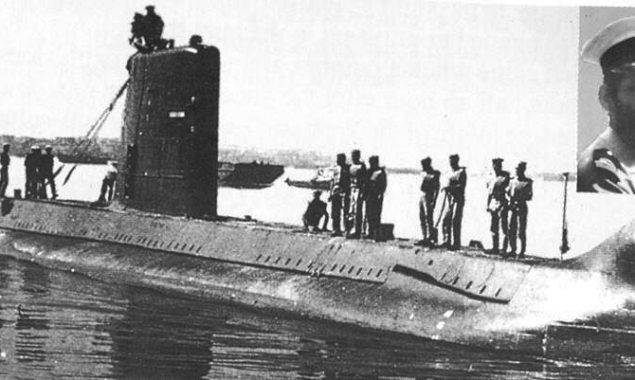Synopsis
The tale of a lone submarine that left the Indian Navy baffled

Exactly 50 years ago, on 9 December 1971, Pakistan Navy’s Daphné-Class Submarine Hangor created history when it sank the Indian Navy Type 14 Blackwood-class frigate Khukri off the coast of Diu in Gujarat, India. As many as, 18 officers including Khukri Captain Mahendra Nath Mulla and 176 sailors were lost when the ship sank.
The episode of Hangor, which was commanded by its indefatigable Commander Ahmad Tasnim reads like a fictional thriller and could be termed as exaggeration in a war where the odds were heavily tilted against Pakistan. Its Eastern wing was severed, the Indian Navy had blockaded East Pakistan and carried out deadly missile boat attacks on the Karachi harbour. Meanwhile, Pakistan Navy’s sole submarine, Ghazi, which had operated boldly during the 1965 Pak-India war, became a casualty of the subsurface mines.
It is remarkable that independent sources including two British and at least two Indian Navy Admirals—from whom compliments can hardly be expected—have acknowledged the valour of Hangor and its crew. In fact, British historian Iain Ballantyne, in his 2019 book ‘The Deadly Trade: A History of Submarine Warfare’ dedicates a whole chapter titled ‘Hangor’s hunt’ describing the battle with accuracy, showering accolades on the gallantry of the Captain Tasnim, who was awarded a Bar to his earlier Sitara-e-Jurat in 1965 for his valour, and his crew.
Separately, the February 2019 issue of British journal “Warships International Fleet Review” featured a rousing ovation to the mêlée titled ‘The Shark that Bit Back—How a Pakistan Navy Submarine made history.’ Incidentally, Hangor is the local name for ‘shark.’
The revered tale began on the midnight of 26 November 1971 when Hangor sailed from its base with a load of torpedoes to patrol the Bombay harbour. Soon after its wartime deployment, the submarine developed defects in its computers which were swiftly repaired as the patrol continued. Hangor caught wind that from the Indian Navy Western Naval Command that warships which were on their way to launch the first missile attack on Karachi. Despite the fact that Commander Tasnim was in a position to sink the marauders, he did not do so due to strict orders not to take aggressive action unless attacked, since the war had not formally commenced in the western sector. Ruing the missed opportunity once the Indian fleet had passed overhead, Commander Tasnim broke radio silence to warn the Pakistan Navy Headquarters of the impending attack. This transmission was detected by the Indian Navy, which dispatched two anti-submarine warfare frigates INS Khukri and Kirpan to intercept Hangor.
More suspense was in store. One of the cooling pumps on board broke down. Without repairs to this pump it would not be possible to continue war patrol, however Commander Tasnim, who had been second in command of PNS/M Ghazi during the 1965 war, ruled out returning home and took the ultimate risk of repairing the sub in enemy waters while partially surfaced. To disguise its identity, lights were installed to give Hangor the semblance of a fishing boat. A snooping Indian Warcraft did detect the sub but fell for the ruse and dismissed it as a fishing boat. The repair, which would have taken a week in the dockyard under normal circumstances, was accomplished within a matter of hours.
While INS Khukri and Kirpan were still searching for the intruding Pakistani submarine, Commander Tasnim ambushed the duo by firing a homing torpedo at Kirpan. Following this, Khukri moved to attack but showing presence of mind, the gallant PN Commander fired his second torpedo which exploded under the hull of the enemy assailant, hitting its magazine of explosives and sinking it within minutes. Kirpan then retaliated attack by dropping depth charges but the Hangor fired its third torpedo which forced the attacker to turn tail. It did not even return to pick up survivors till the next day, for which surviving sailor Chanchal Singh Gill later sued Kirpan’s captain for cowardice.
Vice Admiral Mihir K. Roy in his book “War in the Indian Ocean” and, former Flag Officer Commanding-in-Chief (FOC-IN-C) of India’s Western Naval Command and Indian Naval Chief Admiral Sourendra Nath Kohli, in his book “Transition to Triumph” provide graphic details of Hangor’s daring attack and the massive hunt to trap it after the encounter of 9 December. The Indian Navy cancelled ‘Operation Triumph’ – the third missile attack scheduled for 10 December – and for four days it utilised all available anti-submarine ships, specialised anti-submarine naval aircrafts, shore-based surveillance aircrafts and anti-submarine helicopters to comb the area extending from the point southwest of Diu Head, where Khukri was sunk, right up to a point just short of Pakistan Airforce’s air-strike range from Karachi.
Hangor had the last laugh in the cat-and-mouse game. Despite a depleting battery, evading the pursuers, it laid false trails for the HUK groups to follow but returned home triumphantly. While India may spin webs of lies and boast of its victory in 1971, the lone sub Hangor frustrated the entire might of Indian Navy pitched against it and gives us a moment of cheer.
Catch all the Pakistan News, Breaking News Event and Latest News Updates on The BOL News
Download The BOL News App to get the Daily News Update & Follow us on Google News.



